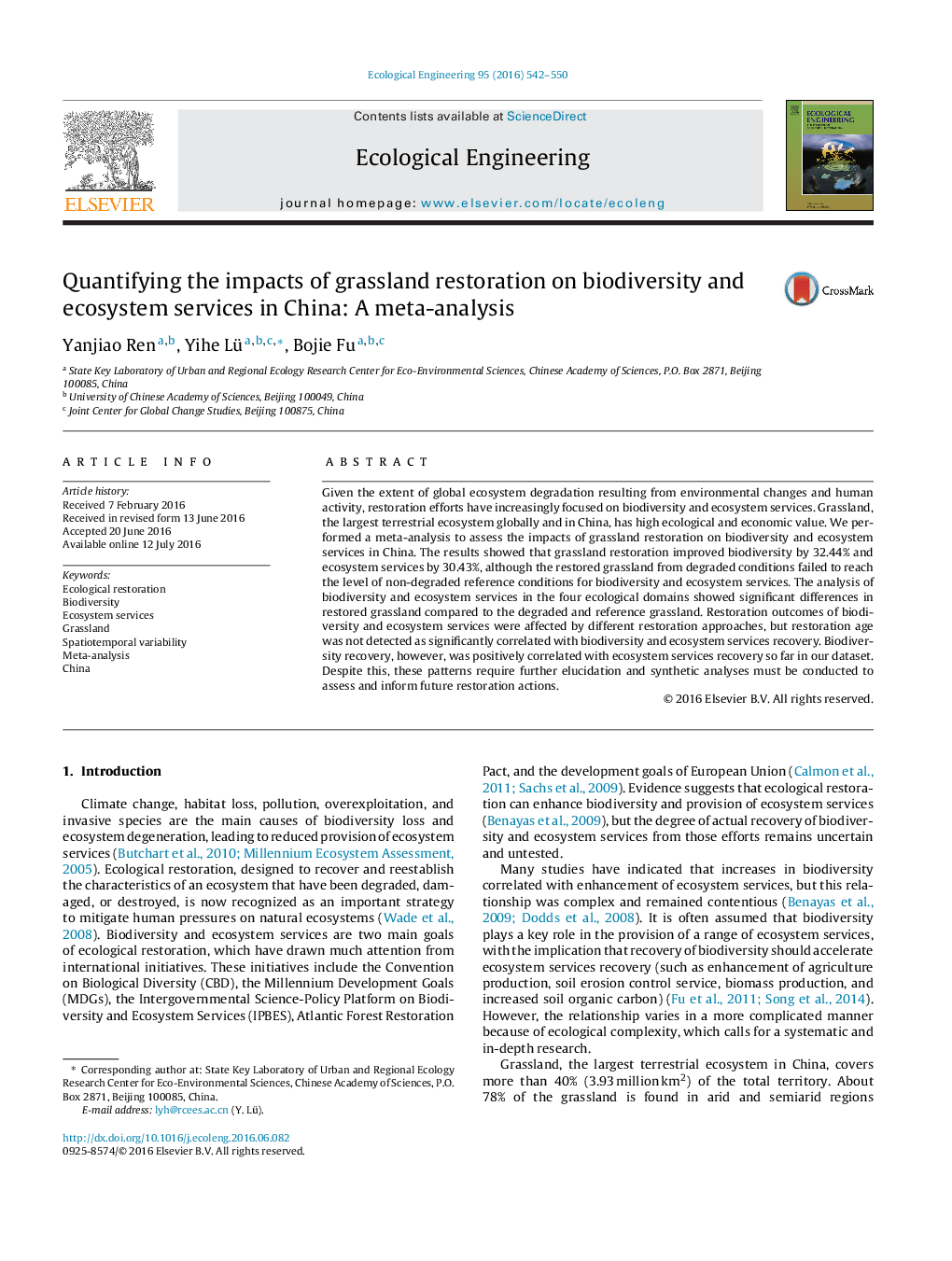| Article ID | Journal | Published Year | Pages | File Type |
|---|---|---|---|---|
| 4388482 | Ecological Engineering | 2016 | 9 Pages |
•The first systematical assessment of grassland restoration in China is performed.•Grassland restoration can increase biodiversity and supply of ecosystem services.•Restoration outcomes are affected by approaches, but not correlated with ages.•Biodiversity recovery is positively related to ecosystem services recovery.•Recovery of biodiversity and ecosystem services varies geographically.
Given the extent of global ecosystem degradation resulting from environmental changes and human activity, restoration efforts have increasingly focused on biodiversity and ecosystem services. Grassland, the largest terrestrial ecosystem globally and in China, has high ecological and economic value. We performed a meta-analysis to assess the impacts of grassland restoration on biodiversity and ecosystem services in China. The results showed that grassland restoration improved biodiversity by 32.44% and ecosystem services by 30.43%, although the restored grassland from degraded conditions failed to reach the level of non-degraded reference conditions for biodiversity and ecosystem services. The analysis of biodiversity and ecosystem services in the four ecological domains showed significant differences in restored grassland compared to the degraded and reference grassland. Restoration outcomes of biodiversity and ecosystem services were affected by different restoration approaches, but restoration age was not detected as significantly correlated with biodiversity and ecosystem services recovery. Biodiversity recovery, however, was positively correlated with ecosystem services recovery so far in our dataset. Despite this, these patterns require further elucidation and synthetic analyses must be conducted to assess and inform future restoration actions.
